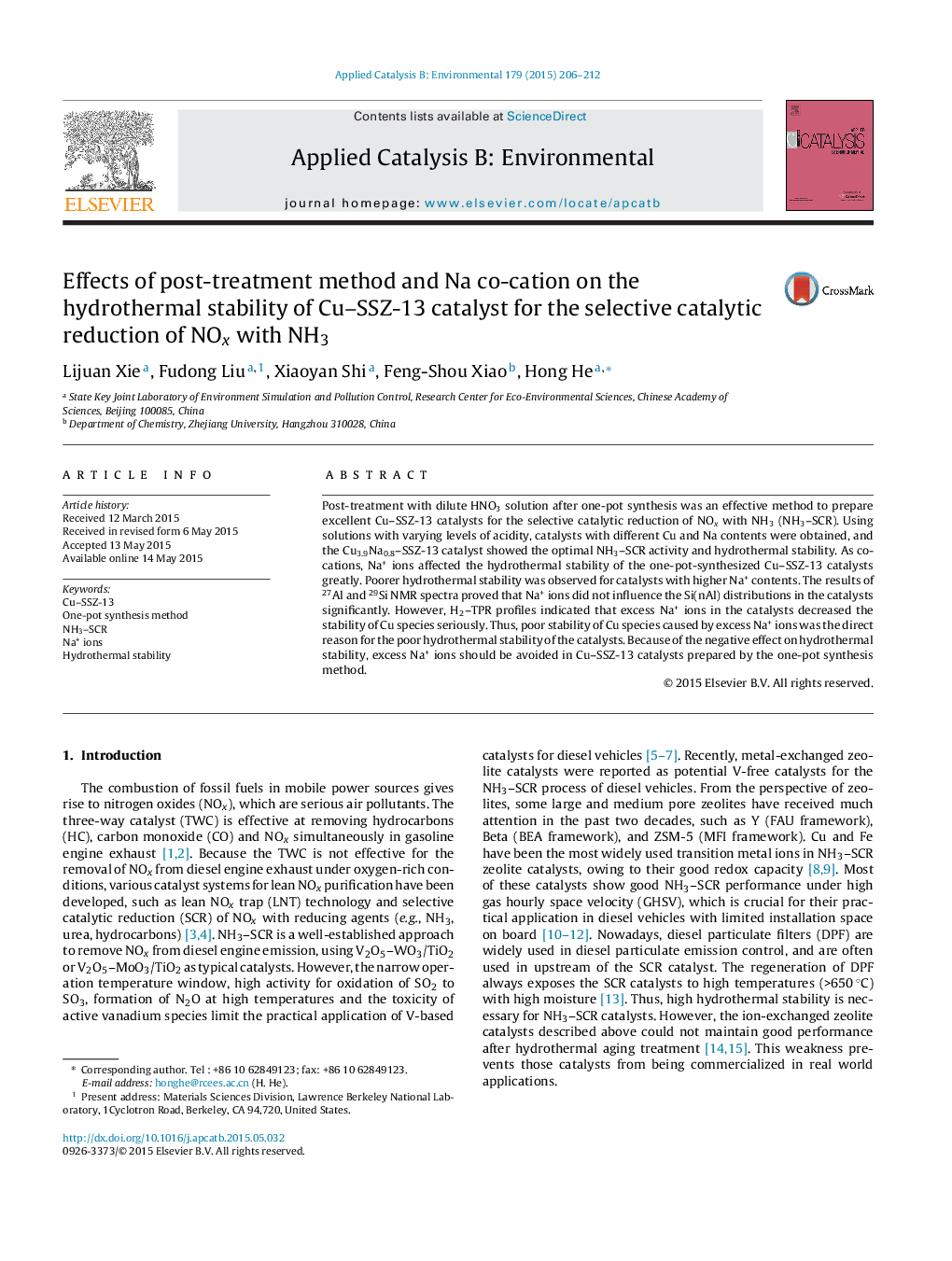| Article ID | Journal | Published Year | Pages | File Type |
|---|---|---|---|---|
| 45450 | Applied Catalysis B: Environmental | 2015 | 7 Pages |
•Post-treatment with dilute HNO3 solution was effective to prepare Cu–SSZ-13 catalysts with excellent NH3–SCR performance.•The one-pot-synthesized Cu–SSZ-13 catalyst with higher Na+ content showed poorer hydrothermal stability.•The Cu species with poor stability aroused by high Na+ content resulted in the poor hydrothermal stability of the catalyst.
Post-treatment with dilute HNO3 solution after one-pot synthesis was an effective method to prepare excellent Cu–SSZ-13 catalysts for the selective catalytic reduction of NOx with NH3 (NH3–SCR). Using solutions with varying levels of acidity, catalysts with different Cu and Na contents were obtained, and the Cu3.9Na0.8–SSZ-13 catalyst showed the optimal NH3–SCR activity and hydrothermal stability. As co-cations, Na+ ions affected the hydrothermal stability of the one-pot-synthesized Cu–SSZ-13 catalysts greatly. Poorer hydrothermal stability was observed for catalysts with higher Na+ contents. The results of 27Al and 29Si NMR spectra proved that Na+ ions did not influence the Si(nAl) distributions in the catalysts significantly. However, H2–TPR profiles indicated that excess Na+ ions in the catalysts decreased the stability of Cu species seriously. Thus, poor stability of Cu species caused by excess Na+ ions was the direct reason for the poor hydrothermal stability of the catalysts. Because of the negative effect on hydrothermal stability, excess Na+ ions should be avoided in Cu–SSZ-13 catalysts prepared by the one-pot synthesis method.
Graphical abstractFigure optionsDownload full-size imageDownload as PowerPoint slide
